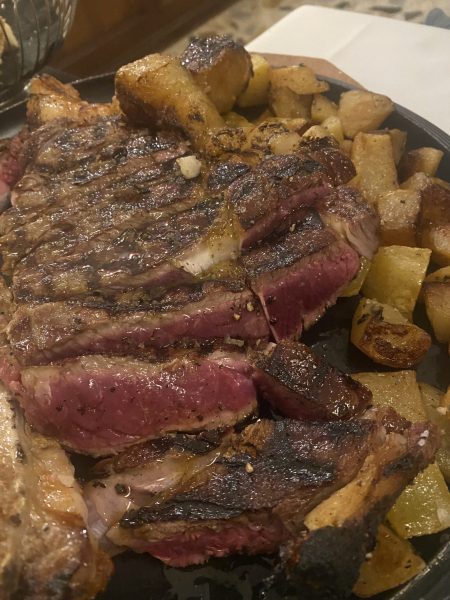By Emma McDowell, senior in public relations
It’s no secret that food is a key part of Italian culture. It’s one of the things I was most looking forward to when preparing for my study abroad trip to Urbino, Italy. However, there were many cultural traditions around dining out that I had to learn.
First, Italians have different meal times than Americans. Lunch takes place in late afternoon, around 1 or 2 p.m. and dinner begins at 8 p.m. or later. Snacks and coffee breaks are intermixed throughout the day to ensure no one is ever going hungry.
Within the first week, I was deeply intimidated by going to restaurants and ordering food. Menus posted outside listed foods I had never heard of and had no chance of pronouncing correctly. In addition to my lack of food knowledge, the menus were split into a variety of courses that I didn’t understand.
Antipasti is a starter like a cheese and salami board or bruschetta. Primi Piatti is a pasta dish that usually doesn’t contain meat. Secondi Piatti consists of a meat or seafood dish. Contorni is a side that is served alongside secondi. Finally, there is the dolce and caffe, which is dessert served with coffee.

When I first saw a menu like this, I had no idea how I would eat all that food. However, with the smaller portions and spread-out mealtime, it’s easier to manage than expected. It’s also not required to order each plate, but it is encouraged to order at least two courses. Pro-tip: order multiple dishes and eat family style with some friends.
The dining experience also differs wildly between America and Italy.
At American restaurants, the goal is to get customers out the door as soon as they walk in. Food is made as fast as possible, and servers push the check onto tables when the last bite is eaten. As someone who worked as a waitress, I understand that the job relies on tips and the best way to get more tips is to get more tables.
Unfortunately, this isn’t conducive to having social gatherings with friends and family. In America, some restaurants even limit table times so everyone can dine in.

In Italy, servers try to interact with customers as little as possible. They only come by when waved over; there is an understanding that dining together is a social moment and people don’t want to be disturbed. Some nights we would spend hours at the dinner table passing around food and chatting about the day.
Since being back in America, I miss the laid-back atmosphere of eating out. I have found myself wanting to carry on the conversation but having to leave so servers can move on to the next customer.
Aside from sit-down restaurants, there are buy-by-the-slice pizzerias, sandwich shops and gelato shops. Fast-casual shops are plentiful and serve food that is just as delicious as a traditional restaurant.
While it’s not easy to find an Italian dining experience in America, it is easy to gather friends, make pasta and have a great time. After all, in Italy, food is second to the relationships that are formed.
This post is one in a series of blog posts written by Iowa State University students who studied abroad in Urbino, Italy, in spring 2022 with Deni Chamberlin, Greenlee School associate professor. The program focuses on mobile image making, Italian language, Renaissance art history and literature and the history of food and culture.
